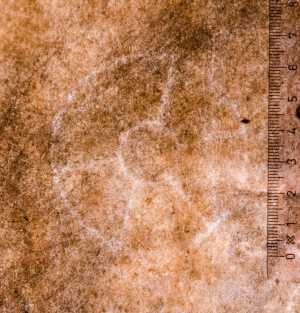Specifications
| Title | Study for a Pilgrim with a Large Hat |
|---|---|
| Material and technique | Black, white and coloured chalks, blackened on the verso |
| Object type |
Drawing
> Two-dimensional object
> Art object
|
| Location | This object is in storage |
| Dimensions |
Height 371 mm Width 262 mm |
|---|---|
| Artists |
:
Anoniem
: Sebastiano del Piombo : Gaudenzio Ferrari Attributed to: Dosso Dossi |
| Accession number | I 16 (PK) |
| Credits | Loan Stichting Museum Boijmans Van Beuningen (former Koenigs collection), 1940 |
| Department | Drawings & Prints |
| Acquisition date | 1940 |
| Creation date | in circa 1510-1520 |
| Watermark | Wheel with six spokes (diam. 63 mm, in the centre, on P? and P? of 9P, vH?), similar, but twice as large, as Briquet 13231 (part of a group of three, 32 x 32 mm, doc. Erfurt/Ulleben, dated 1535-1567), no similar six-spoked wheels, resting on two chainlines, in Piccard Online. |
| Collector | Collector / Franz Koenigs |
| Mark | T. Lawrence (L. 2445), A. Grahl (L.1199), F.W. Koenigs (L.1023a) |
| Provenance | Sir Thomas Lawrence (1769-1830, L.2445), London; Art dealer Samuel Woodburn (1781-1853, L.2584), acquired with the Lawrence Collection in 1834; his sale, London (Christie, Manson & Woods) 4-8.06.1860, lot 392 (G. Ferrari); August Grahl (1791-1868, L.1199), Dresden; his sale, London (Sotheby) 27-28.04.1885, lot 97 (Gaudenzio Ferrari, BP 6/60/0); - ; Franz W. Koenigs (1881-1941, L.1023a), Haarlem, acquired in (?) 1927 (attributed to Gaudenzio Ferrari); D.G. van Beuningen (1877-1955), Rotterdam, acquired with the Koenigs Collection in 1940 and donated to Stichting Museum Boijmans Van Beuningen |
| Exhibitions | Rotterdam 2010-2011 (coll 2 kw 8-9) |
| Internal exhibitions |
De Collectie Twee - wissel VIII, Prenten & Tekeningen (2010) De Collectie Twee - wissel IX, Prenten & Tekeningen (2011) |
| Research |
Show research Italian Drawings 1400-1600 |
| Material | |
| Object | |
| Technique |
Indenting
> Indented
> Drawing technique
> Technique
> Material and technique
Indenting
> Indented
> Drawing technique
> Technique
> Material and technique
Highlight
> Painting technique
> Technique
> Material and technique
|
| Geographical origin | Italy > Southern Europe > Europe |
| Place of manufacture | Milan > Italy > Southern Europe > Europe |
Do you have corrections or additional information about this work? Please, send us a message
























